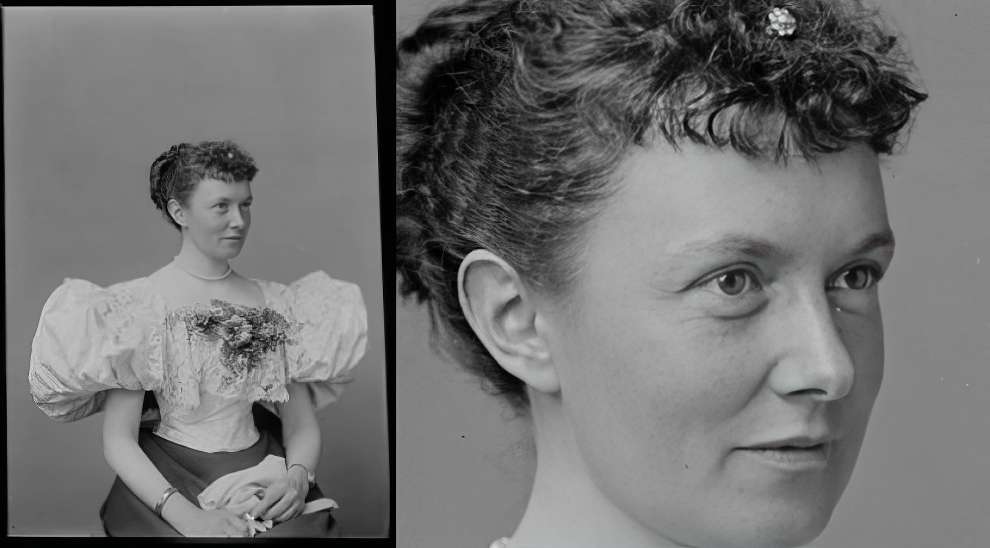Date:
12.04.2024 15:35
A contribution by
blueprintreview.co.uk
 Director: Noboru Nakamura
Director: Noboru NakamuraScreenplay: Toshidi Gondo
Based on a Novel by: Kyoko Ohta
Starring: Miyuki Kuwano, Mikijirô Hira, Keisuke Sonoi, Masuyo Iwamoto, Misako Tominaga, Bunta Sugawara
Country: Japan
Running Time: 106 min
Year: 1964
BBFC Certificate: 18
In the mid-1960s, the Japanese director Noboru Nakamura was best known for directing family dramas. He’d been working at the Shochiku studio all his career, directing films for them since the early 40s, and his family had even worked in Shochiku’s theatres in their early days. Shochiku found great success in so-called ‘women’s films’, most notably launching the careers of Yasujirō Ozu and Mikio Naruse, who would exemplify the genre. Nakamura worked alongside these legends in their later years, making similar films.
However, the early 60s brought the New Wave to Japanese cinema. Shochiku were pivotal to this, with studio head Shirō Kido actively working to produce “cheaply made, innovative pictures” that “could emulate the success of the Nouvelle Vague in Europe”. He gave opportunities to young directors full of new ideas and styles, including Nagisa Ōshima, Yoshishige Yoshida and Masahiro Shinoda.
uk/wp-content/uploads/2024/04/the-shape-of-night-6.jpeg">
Most of these new figures soon left the studio though, finding the atmosphere too stifling for their visions and ambitions. So, Shochiku turned back to their old talent but not without considering new trends, as television was disrupting the industry and Kido didn’t want to go bust like its competitor Shintoho already had.
This might explain why 1964’s The Shape of Night (a.k.a. Yoru no henrin) seemed like a change of pace for Nakamura. It’s not as aesthetically raw or stylised as most of the New Wave titles of the era, but the film seems to be treading an unusual middle ground between the measured tales of middle-class families the director and studio were best known for and the tougher depictions of the lower classes that were becoming popular.
The peculiar nature of The Shape of Night must have appealed to the Radiance Films team, as they are releasing the film on Blu-ray. Curious and drawn to the handsome cover art, I requested a copy to review and my thoughts follow.
uk/wp-content/uploads/2024/04/the-shape-of-night-1.jpeg">
The Shape of Night focuses on Yoshie Nomoto (Miyuki Kuwano), a woman we first see working as a prostitute on the city streets. She picks up a client, Hiroshi Fujii (Keisuke Sonoi), and the man asks if he can see her more regularly. Yoshie agrees and, after the pair see each other more often, Fujii asks why she does what she does. The film flashes back to let us find out for ourselves.
It turns out Yoshie started working in a factory before moving into bar work in the evenings. There, she met and fell in love with a low-level gang member called Eiji Kitami (Mikijirô Hira). After their ‘honeymoon period’, things turned sour when Eiji ran short on cash and pressured Yoshie into selling her body to help them make ends meet.
uk/wp-content/uploads/2024/04/the-shape-of-night-4.jpeg">
Initially thought to be a one-time fix to their money problems, Yoshie found herself forced into working as a prostitute full time, particularly after it became clear that Eiji’s yakuza boss was the one putting pressure on him and taking a cut of her earnings.
Yoshie tried to get out but she and Eiji were both punished, leading to her continuing through both fear and pity.
As the synopsis above alludes, The Shape of Night is a bleak film. There is little hope for Yoshie and it’s painful to watch her constantly kicked back into a life she never wanted for herself.
uk/wp-content/uploads/2024/04/the-shape-of-night-3.jpeg">
However, the film remains compelling partly through its depth of character. The central relationship between Yoshie and Fujii is complex and fascinating. Whilst the latter is abusive and manipulative, he acts this way out of frustration and fear. He feels as helpless as her and this only builds after a pivotal incident later in the film, which emasculates the character.
That said, the second half does feel slower than the first and is tougher to watch, due to the build-up of suffering and inescapable sense of hopelessness.
Another aspect that keeps the film engrossing, however, is Nakamura’s direction. He develops and visualises the drama with such elegance. Straight from the offset, you can see you’re in the hands of a master. The credits have Yoshie standing in the shadows, waiting, and the lighting and expressions say everything we need to know about what she’s waiting for without spelling it out.
uk/wp-content/uploads/2024/04/the-shape-of-night-2.jpeg">
This is followed by another subtly drawn scene where Fujii picks up Yoshie for the first time. Their conversation at a bar is uncomfortable but the more experienced Yoshie knows exactly what to do to ease his mind. She asks him about his work, leading to an outpouring of information that she’s clearly not interested in but loosens him up enough for him to make the move she’s waiting for.
The strength of scenes like this (and there are many) are also down to the performances. The cast, particularly Kuwano, is excellent. The lead actress performs with great nuance, drawing you deeply into her plight. Hira matches this effectively, with an intense portrayal that bubbles with rage and frustration under and occasionally above the surface.
The film looks gorgeous too. As mentioned earlier in this review, rather than present his story in a rough, ‘gritty’ fashion with handheld cameras and such, Nakamura shoots in a largely more classical fashion, albeit with some use of locations. The lighting is superb too, making striking use of neon and shadows.
uk/wp-content/uploads/2024/04/the-shape-of-night-5.jpeg">
The publicity for this release and several reviews I’ve seen make a comparison to the work of Wong Kar-Wai and I can see that. Both have what I’d call a ‘stylised naturalism’ where there’s a texture of reality in the setting but a seductive use of light and colour, as well as some artful compositions.
So, whilst The Shape of Night is not an easy watch, it is, nonetheless, a beautifully crafted film that is rich in nuance. Centered around a couple of stunning performances, it’s a masterful, if grim, melodrama.
Film: 




The Shape of Night is out on 29th April on region A&B Blu-Ray, released by Radiance Films. The transfer looks great. It has a natural grain, lovely colours and a fairly clean print. I had no issues with the audio either. I’ve used screengrabs throughout this review to give you an idea of how it looks.
LIMITED EDITION BLU-RAY SPECIAL FEATURES:
– High-Definition digital transfer
– Uncompressed mono PCM audio
– New interview with Yoshio Nakamura, son of director Noboru Nakamura (2024, 16 mins)
– Major Changes – a visual essay on the artistic upheavals at Shochiku studios during the 1960s by Tom Mes (2024, 13 mins)
– Easter Egg (2024, 5 mins)
– Trailer
– New and improved English subtitle translation
– Reversible sleeve featuring original and newly commissioned artwork by Time Tomorrow
– Limited edition booklet featuring new writing by Chuck Stephens
– Limited edition of 3000 copies, presented in full-height Scanavo packaging with removable OBI strip leaving packaging free of certificates and markings

Tom Mes provides a 13-minute talk about Shockiku in the 1960s. He briefly runs over the studio’s history, before digging into how it fits within the Japanese New Wave. This provides valuable context to the film.
In his interview, Yoshio Nakamura talks about his father, discussing him as a person as well as a filmmaker. He also touches on his family’s strong loyalty to Shochiku. He talks a little about The Shape of Night too and it fits among Noboru Nakamura’s work. It’s a nice piece.
There’s also an ‘Easter egg’ on the disc, in the form of an added short portion to the Yoshio Nakamura interview where the filmmaker reminisces about baseball and how that brought him and his father together. It’s a sweet addition.
I haven’t been sent the booklet to comment on that, but the Radiance booklets I’ve read so far have been valuable supplements to the films.
Overall then, whilst Radiance’s The Shape of Night Blu-ray is not one of the more jam-packed discs out there, what is included in this release is of value and the film itself and its transfer are strong enough to warrant a high recommendation.
Disc/package: 




Latest Posts

04.04.2024 09:42
Exploring The Benefits Of Recline Exercise Bikes For Health And Fitness

08.04.2024 18:25
Stunning Examples of How Victorian Photographers “Retouched” Their Photographs

07.04.2024 12:35
16 Polite Habits That Flight Attendants Secretly Dislike (and the Smarter Ways to Be Kind)

18.03.2024 15:19
The American Opportunity Tax Credit: Who Can Claim It and How?

04.04.2024 13:41
St Anne’s champions OxFarmToFork sustainable food initiative

22.03.2024 23:03

Comments